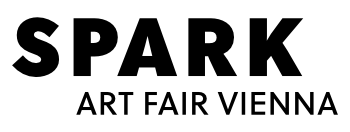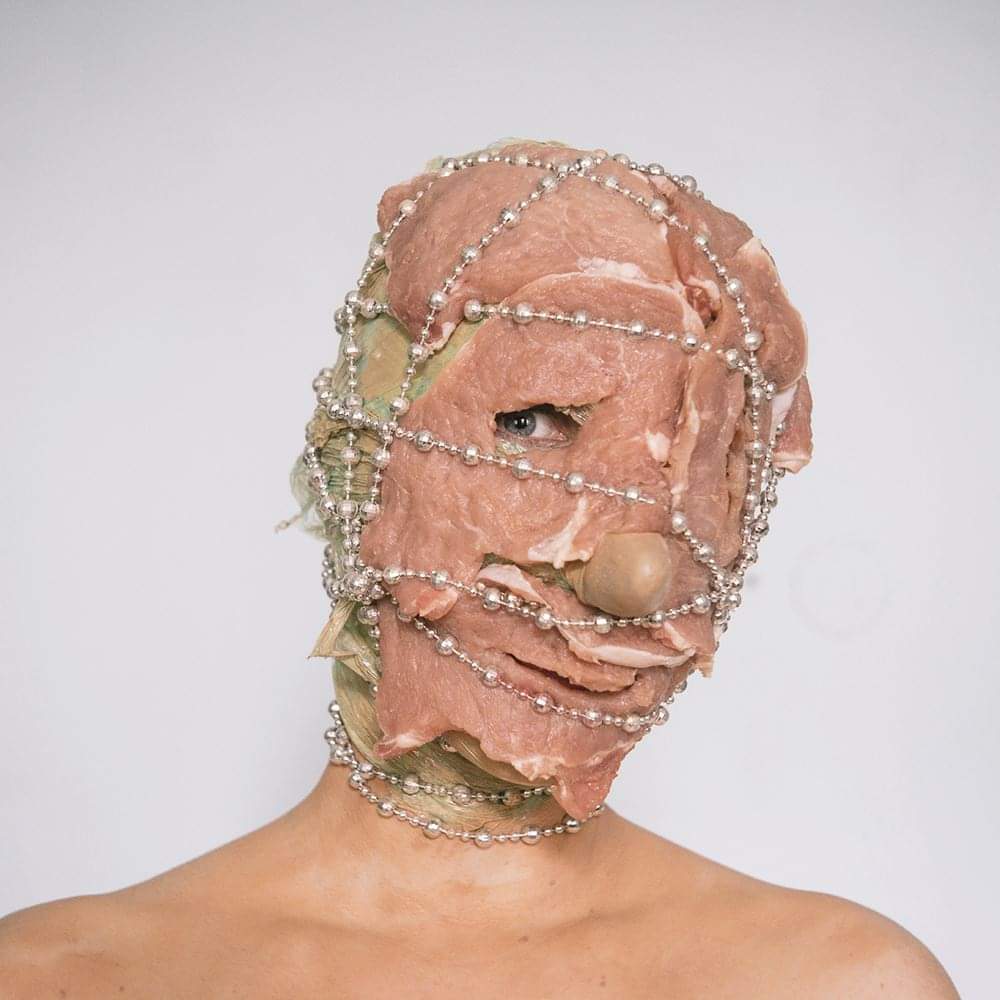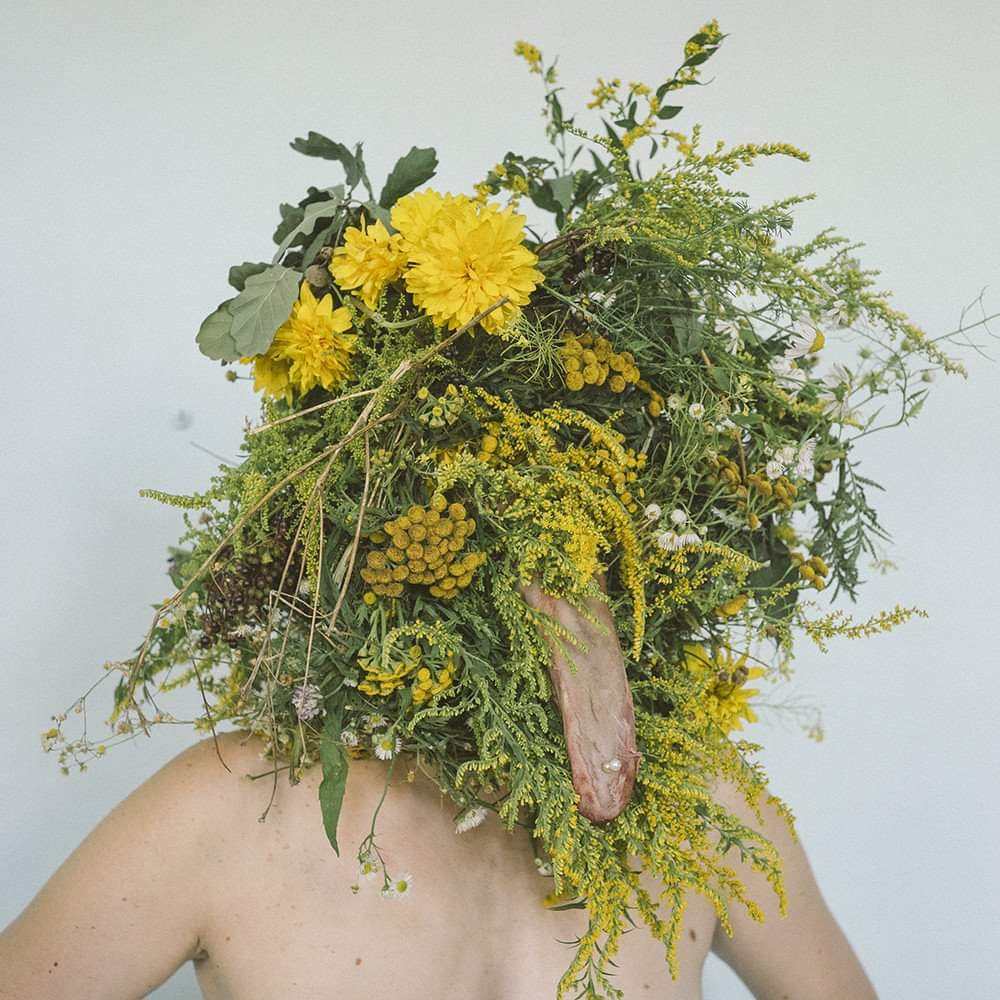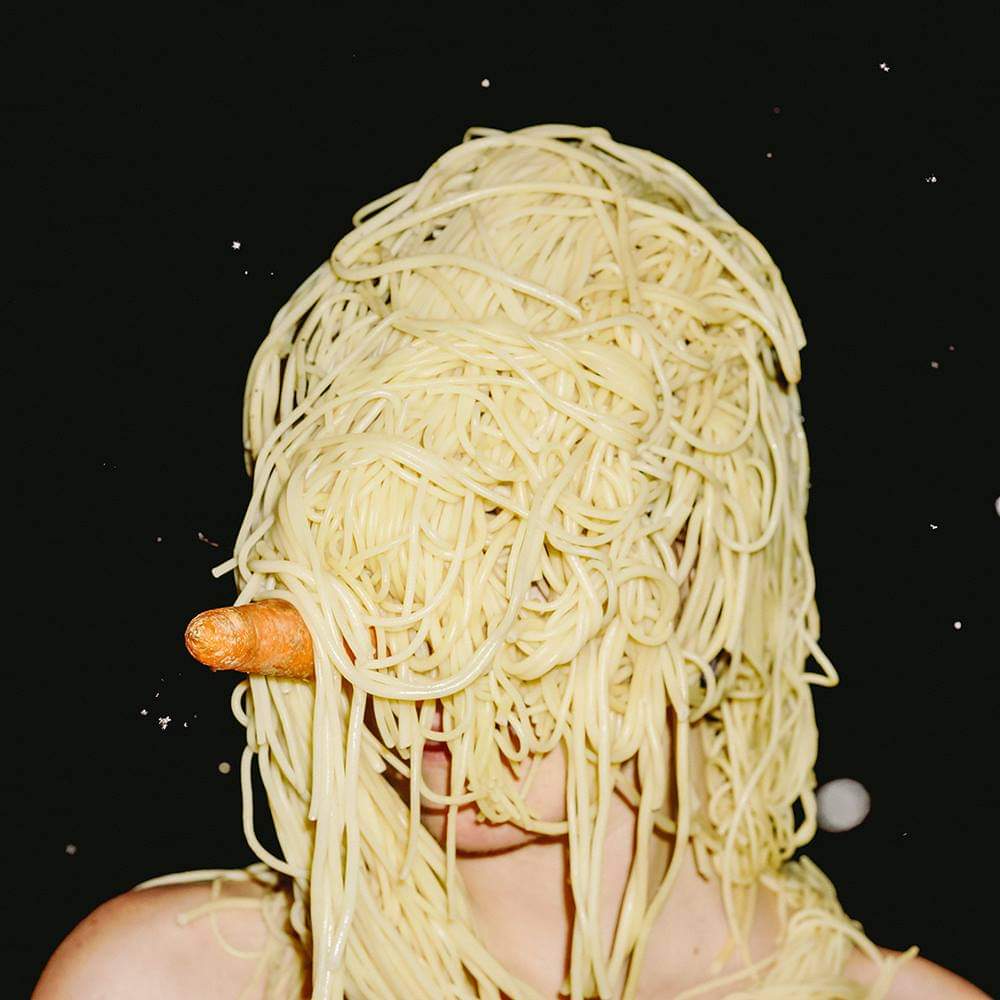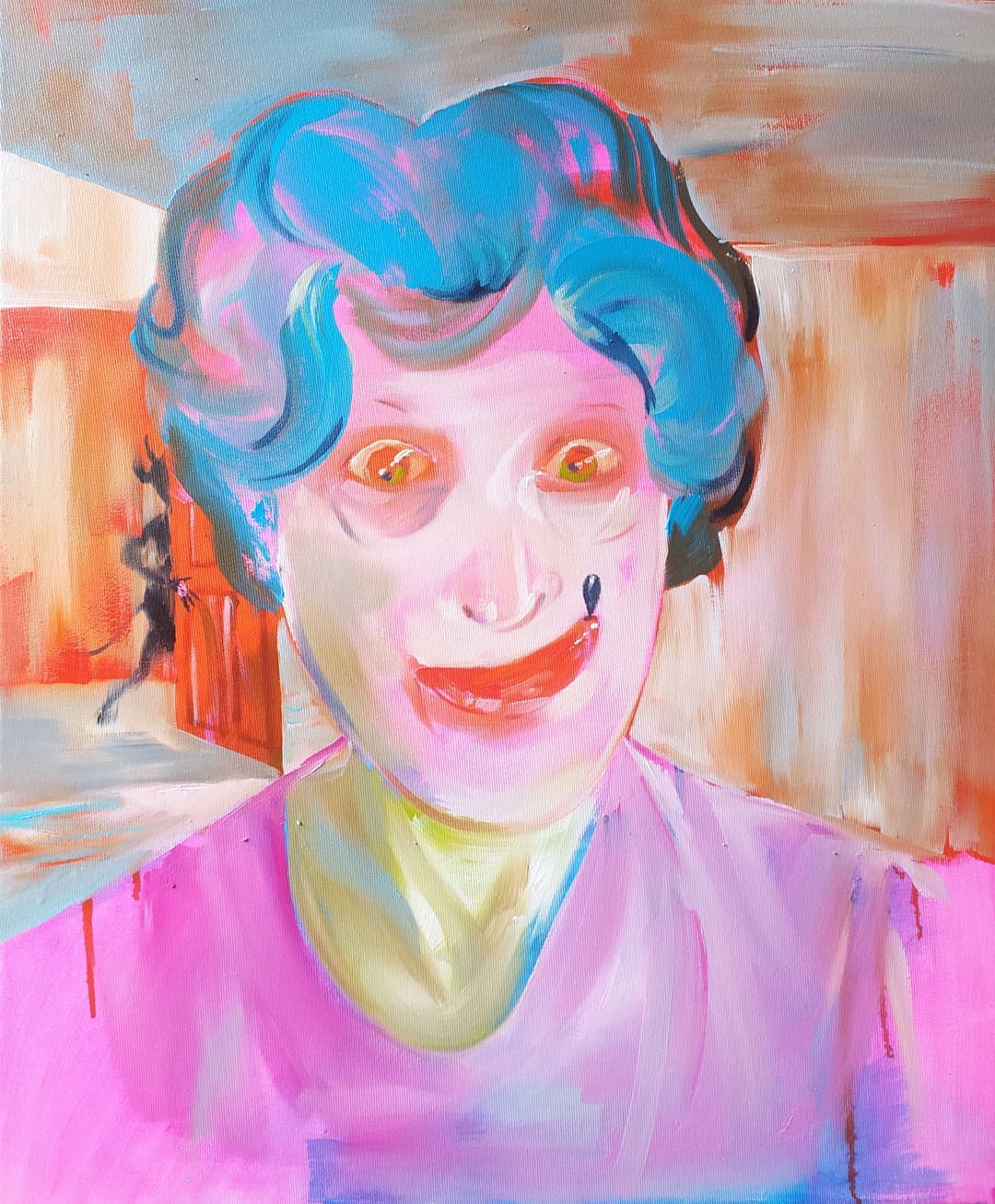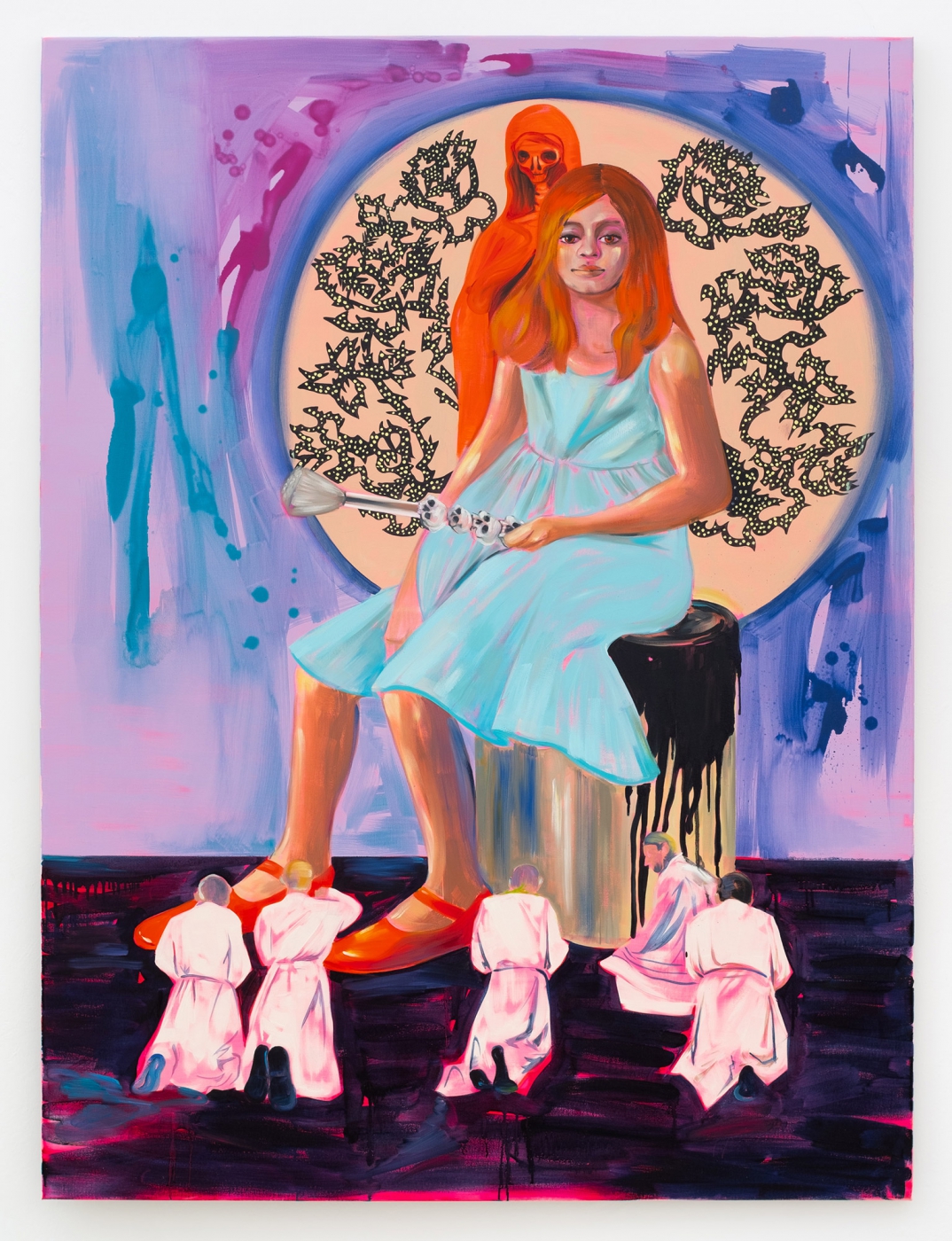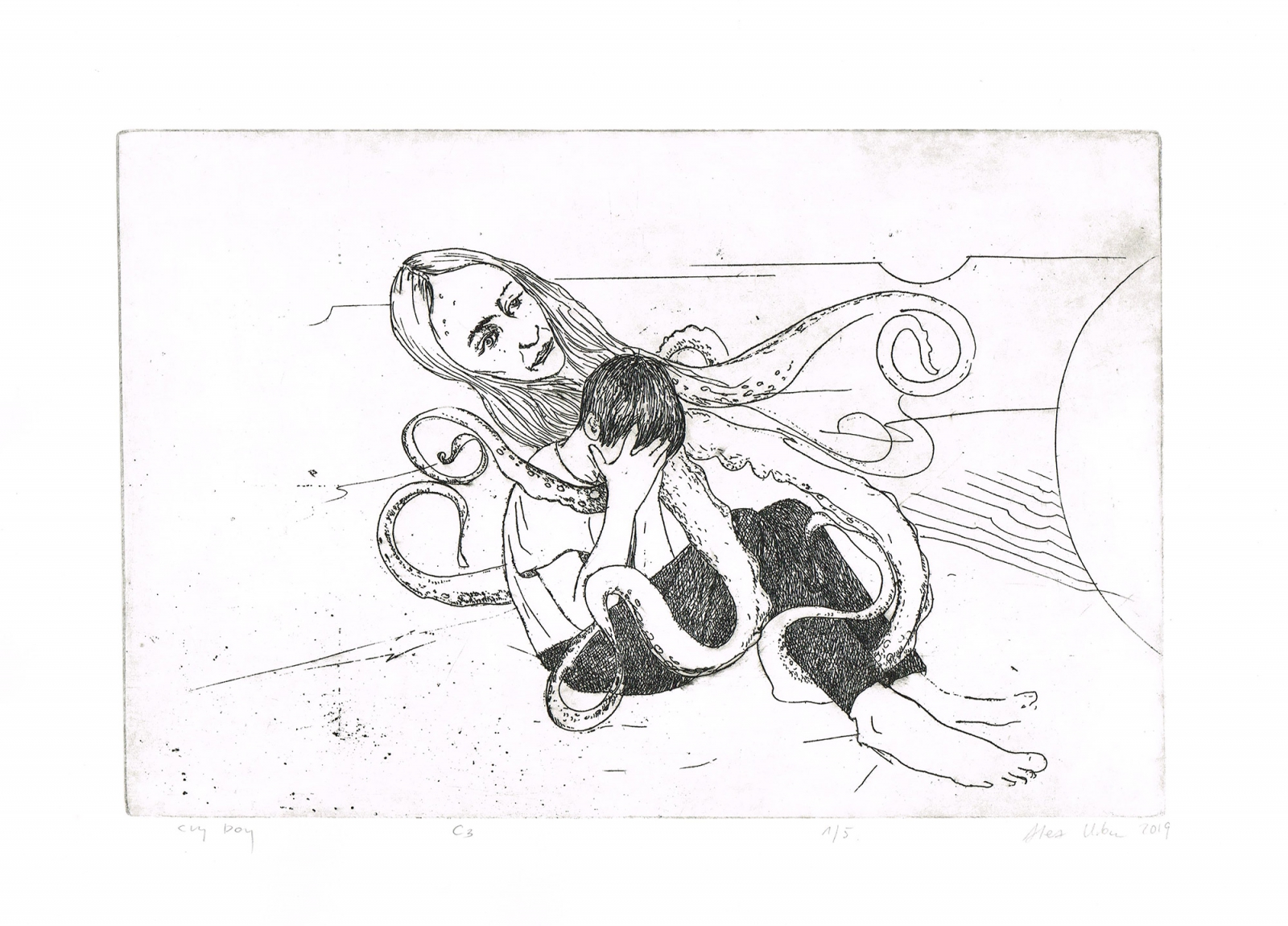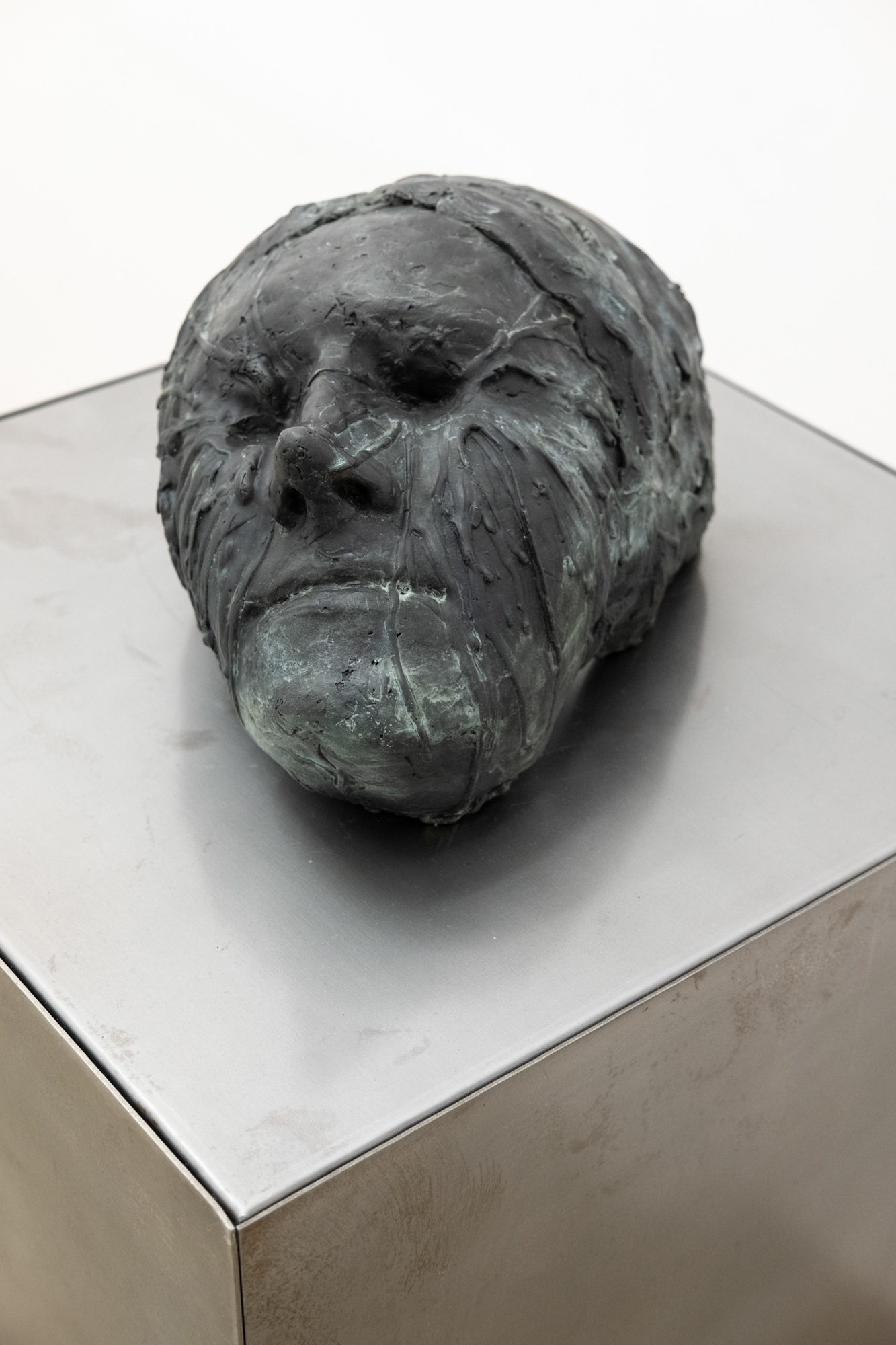LETO
Alex Urban
„The Ur-realism of Aleksandra Urban“
Nature is not something that can be seen by the eye alone—it lies also within the soul, in
pictures seen by the inner eye. —Edvard Munch.
Fear and obsession are the subjects of Aleksandra Urban’s bizarre universe. Her salacious paintings seem to be vivid renderings of dreams, or nightmares, but they are actually more real than not, more familiar than we might like to admit—and that is the kicker. Urban’s images are actually culled from the Internet, a receptacle for the detritus of the human psyche—and perhaps the most accurate barometer of the collective unconscious we have today. Although many of the pictures seem to depict explicit sexual or paranoid fantasies, it is not always clear what exactly is going on, leaving it open to the viewer’s subconscious to fill in the blanks. What society deems as transgressive is often simply human nature, and not hurtful of others, yet we hide away such impulses as undesirable. You could say Urban makes Rorschach tests that reveal the cracks in our psyches.
We might recognize these pictures in our own guilty fantasies, and in this Urban is akin to Paul McCarthy—lampooning popular norms as ridiculous and exposing us as bumbling bumpkins, sympathetic though we may be. Thus Urban’s people are portrayed as animals, taking selfies adorned in antlers or wearing pig masks and pearls, and as clueless clowns pondering their own sexual organs with dumb curiosity and utter lack of passion. What Urban portrays really is the precise disjunction, the ambiguity, between society’s projection of what reality should be and what it really means to be a human being.
text: Cathryn Drake
Biography
Aleksandra Urban (born 1978) lives and works in Wrocław. She graduated from the Wrocław Academy of Fine
Arts and is a two-time recipient of a scholarship from the Ministry of Culture and National Heritage.
In her works, she deals with the darker side of virtual society. She makes use of imagery drawn from the net, mostly the sort that demonstrates the demise and fall of the intellect, the cruelty and trolling that abounds corporate and political manipulation and hidden rooms of sexuality. Her canvases reverberate with strong colors, expressive gestures of the painter’s brush, and drips of
paint that lift figuration and content above their decorative character and into an earnest commentary on reality. Hers is a play between painterly techniques and the imagination colliding with the dregs of human nature. Urban’s works have been exhibited at Art Space Gallery in Edinburgh, LETO in Warsaw, Geppert’s Apartment in Wrocław, Art Agenda Nova in Kraków,
Bestregarts Gallery in Frankfurt, Hugenottenhalle in Neu-Isenburg; Wrocław Museum of Contemporary Art, EC Gallery in Chicago, A Gentil Carioca in Rio de Janeiro, BWA Studio in Wrocław, BWA in Kielce, Landskrona Art Gallery in Landskrona, Dio Horia in Mykonos, Warsaw Museum of Modern Art, Zacheta National Gallery in Warsaw, BWA in Olsztyn, Biennale de La Biche, Guadeloupe, Platan Gallery in Budapest and Stephen Romano Gallery in New York, and more
LETO
Founded in 2007, LETO Gallery is a major player on the Polish contemporary art scene. Through the unconventional perspective and fearless choices of its founder, Marta Kołakowska, the gallery has established itself as a site of cooperation, education and promotion for the millennial generation of artists, namely, those who came of age after the fall of communism in 1989. The work shown by the gallery is vigorously expressive and even brutal at times.
Above all, the gallery’s motto is based on the idea that the greatest resource we have at our disposal is the community. The goal is to build strong connections with people and maintain a sense of honesty and integrity in every project.
Marta Kołakowska
Founder
Sebastian Gawłowski
Artistic Director

+48661918814
Marta Kolakowska
+48501696440
Alex Urban
„The Ur-realism of Aleksandra Urban“
Nature is not something that can be seen by the eye alone—it lies also within the soul, in
pictures seen by the inner eye. —Edvard Munch.
Fear and obsession are the subjects of Aleksandra Urban’s bizarre universe. Her salacious paintings seem to be vivid renderings of dreams, or nightmares, but they are actually more real than not, more familiar than we might like to admit—and that is the kicker. Urban’s images are actually culled from the Internet, a receptacle for the detritus of the human psyche—and perhaps the most accurate barometer of the collective unconscious we have today. Although many of the pictures seem to depict explicit sexual or paranoid fantasies, it is not always clear what exactly is going on, leaving it open to the viewer’s subconscious to fill in the blanks. What society deems as transgressive is often simply human nature, and not hurtful of others, yet we hide away such impulses as undesirable. You could say Urban makes Rorschach tests that reveal the cracks in our psyches.
We might recognize these pictures in our own guilty fantasies, and in this Urban is akin to Paul McCarthy—lampooning popular norms as ridiculous and exposing us as bumbling bumpkins, sympathetic though we may be. Thus Urban’s people are portrayed as animals, taking selfies adorned in antlers or wearing pig masks and pearls, and as clueless clowns pondering their own sexual organs with dumb curiosity and utter lack of passion. What Urban portrays really is the precise disjunction, the ambiguity, between society’s projection of what reality should be and what it really means to be a human being.
text: Cathryn Drake
Biography
Aleksandra Urban (born 1978) lives and works in Wrocław. She graduated from the Wrocław Academy of Fine
Arts and is a two-time recipient of a scholarship from the Ministry of Culture and National Heritage.
In her works, she deals with the darker side of virtual society. She makes use of imagery drawn from the net, mostly the sort that demonstrates the demise and fall of the intellect, the cruelty and trolling that abounds corporate and political manipulation and hidden rooms of sexuality. Her canvases reverberate with strong colors, expressive gestures of the painter’s brush, and drips of
paint that lift figuration and content above their decorative character and into an earnest commentary on reality. Hers is a play between painterly techniques and the imagination colliding with the dregs of human nature. Urban’s works have been exhibited at Art Space Gallery in Edinburgh, LETO in Warsaw, Geppert’s Apartment in Wrocław, Art Agenda Nova in Kraków,
Bestregarts Gallery in Frankfurt, Hugenottenhalle in Neu-Isenburg; Wrocław Museum of Contemporary Art, EC Gallery in Chicago, A Gentil Carioca in Rio de Janeiro, BWA Studio in Wrocław, BWA in Kielce, Landskrona Art Gallery in Landskrona, Dio Horia in Mykonos, Warsaw Museum of Modern Art, Zacheta National Gallery in Warsaw, BWA in Olsztyn, Biennale de La Biche, Guadeloupe, Platan Gallery in Budapest and Stephen Romano Gallery in New York, and more
LETO
Founded in 2007, LETO Gallery is a major player on the Polish contemporary art scene. Through the unconventional perspective and fearless choices of its founder, Marta Kołakowska, the gallery has established itself as a site of cooperation, education and promotion for the millennial generation of artists, namely, those who came of age after the fall of communism in 1989. The work shown by the gallery is vigorously expressive and even brutal at times.
Above all, the gallery’s motto is based on the idea that the greatest resource we have at our disposal is the community. The goal is to build strong connections with people and maintain a sense of honesty and integrity in every project.
Marta Kołakowska
Founder
Sebastian Gawłowski
Artistic Director
